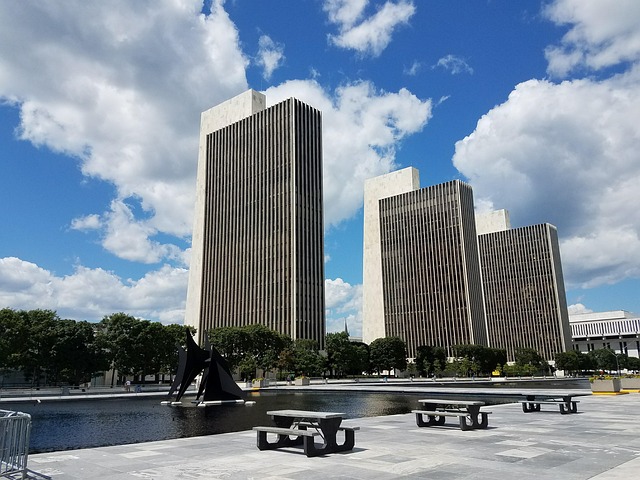Divorce Preparation Albany: Mastering Mediation for a Positive Future

Albany divorce mediation offers a peaceful, collaborative alternative to litigation, with trained mediators guiding couples through negotiations focus…….
In a world where family structures are evolving, the need for efficient, fair, and mutually agreeable solutions to marital disputes is more critical than ever. Albany divorce mediation stands out as a revolutionary approach, offering couples a collaborative path to unraveling complex legal and emotional aspects of separation. This article aims to delve into the intricacies of Albany divorce mediation, exploring its global impact, economic implications, technological integrations, and the challenges it faces. By understanding this process, individuals navigating divorce can make informed decisions and contribute to shaping a more accessible and effective system.
Definition: Albany divorce mediation is a structured, collaborative process where a neutral third party, known as a mediator, assists divorced or divorcing couples in reaching agreements on all relevant legal matters without going to court. This includes decisions related to child custody, visitation, child support, spousal support (alimony), and the division of assets and debts.
Core Components:
Neutral Mediation: The mediator’s primary role is to facilitate communication and negotiation between the couple, ensuring both parties have a voice and are treated fairly. They do not take sides or make decisions but guide the process to help reach a mutually acceptable outcome.
Involuntary and Voluntary Participation: While some jurisdictions may require couples to attempt mediation before proceeding to litigation, many allow for voluntary participation. This flexibility ensures individuals are motivated by personal choice rather than legal mandate.
Confidentiality: Throughout the mediation process, all discussions and documents exchanged remain confidential, fostering an open yet private environment that encourages honest negotiations.
Historical Context:
The concept of mediation has ancient roots, with early forms emerging in various cultures for resolving conflicts. However, its structured application in divorce proceedings gained traction in the late 20th century as a response to the limitations and costs of traditional litigation. The success of mediation in other legal domains, such as family law, prompted its formalization and widespread adoption. Today, Albany divorce mediation is recognized internationally as a valuable alternative to contentious divorce procedures.
Albany divorce mediation has spread beyond national borders, finding resonance worldwide due to its emphasis on cooperation, cost-effectiveness, and time efficiency. Here’s an overview of its international reach:
North America: The United States and Canada have embraced mediation as a primary method for resolving family law matters, with many states and provinces offering mediation programs and training. Cities like Albany, New York, serve as hubs for innovative practices, contributing to the global body of knowledge in this field.
Europe: Mediation is deeply ingrained in European legal systems, particularly in countries like Germany, the Netherlands, and the United Kingdom. These jurisdictions have developed sophisticated mediation models, often requiring mandatory initial mediation sessions before court involvement.
Asia: Countries such as Japan, China, and India are integrating mediation into their family law frameworks. The success of mediation in Western nations has encouraged legal reforms to accommodate this alternative dispute resolution (ADR) method.
Middle East and Africa: The concept is gaining traction in these regions, with some countries adopting mediation models adapted to their cultural and legal contexts. The World Bank and other international organizations play a role in promoting ADR as a means of reducing the burden on judicial systems.
Trends Shaping the Future:
Online Mediation Platforms: Technology has enabled virtual mediation sessions, breaking down geographical barriers and providing accessibility to remote couples. This trend is expected to grow, especially post-pandemic, where digital interactions are more commonplace.
Cultural Sensitivity and Diversity Training: Mediators worldwide are prioritizing cultural competency training to adapt the mediation process to diverse backgrounds. This ensures fairness and respect for participants from various ethnic, religious, and social groups.
Integration with Legal Tech: The legal industry’s embrace of technology is enhancing mediation processes through case management software, secure document sharing, and automated contract generation, improving efficiency and participant experiences.
Albany divorce mediation has far-reaching economic implications, impacting both individuals and society at large:
| Economic Aspect | Impact |
|---|---|
| Cost Savings: Mediation is significantly cheaper than litigation, reducing legal fees, court costs, and other associated expenses. According to a study by the American Bar Association (ABA), mediation can save couples an average of 25-40% compared to divorce through litigation. | By streamlining the process and promoting agreement, mediation prevents the accumulation of legal bills, making divorce more accessible financially for many individuals and families. |
| Time Efficiency: The process is faster than traditional court proceedings, allowing couples to finalize their divorces in weeks or months instead of years. This time savings translates into reduced stress, improved mental health, and quicker emotional recovery. | Faster resolution means less time away from work, enabling individuals to maintain financial stability and reduce the economic impact of prolonged legal battles. |
| Economic Growth: The mediation industry itself contributes to the economy, creating jobs for mediators, support staff, and technology developers. As more jurisdictions adopt mediation, this sector is expected to grow, fostering entrepreneurship and innovation. | By reducing the costs associated with divorce, individuals are more likely to retain their financial resources, stimulating local economies through increased consumer spending. |
| Reduced Legal Aid Demand: With mediation becoming a preferred option, there may be a decrease in demand for legal aid services, allowing organizations to allocate resources more efficiently. | This shift could ensure that limited legal aid funds are directed towards those most in need, promoting access to justice. |
Technology plays a pivotal role in modernizing Albany divorce mediation, enhancing its accessibility and effectiveness:
Online Platforms: Virtual mediation platforms allow couples to participate from anywhere, expanding access to mediation services, especially for individuals living in remote areas or with limited mobility.
Secure Document Management: Digital case management systems enable the safe sharing and storage of sensitive documents, facilitating efficient collaboration between mediators, lawyers, and clients.
Video Conferencing: Video technology enables face-to-face interactions without physical proximity, enhancing communication and reducing barriers to participation.
Automated Contract Generation: Artificial intelligence (AI) tools can assist in drafting divorce agreements, streamlining the process and minimizing errors. These systems learn from existing legal documents and adapt to new data, providing customized contract templates.
Mobile Apps: Dedicated apps offer a user-friendly interface for managing mediation schedules, communication, and document sharing, ensuring participants stay engaged throughout the process.
The development and success of Albany divorce mediation are heavily influenced by policies and regulations that vary across jurisdictions:
Mandatory Mediation Laws: Some countries and states mandate mediation as a mandatory step before filing for divorce or child custody. For example, England and Wales require couples to attempt mediation before going to court for family matters.
Government Support: Governments play a crucial role in promoting mediation by providing training programs, funding initiatives, and establishing specialized mediation centers. These efforts ensure the availability of qualified mediators and accessible services.
Legal Frameworks: Legislation outlines the scope and limitations of mediation, defining what matters can be mediated and setting guidelines for mediator qualifications and conduct. It also addresses confidentiality, enforcement of agreements, and the role of courts in mediation cases.
Cross-Border Cooperation: International cooperation is essential when couples involved in a divorce have assets or residences in multiple countries. Mediation agreements must consider various legal systems and cultural norms to ensure their enforceability across jurisdictions.
Despite its numerous benefits, Albany divorce mediation faces several challenges that require strategic solutions:
Access to Mediators: In some regions, especially rural areas or low-income communities, the availability of trained mediators is limited, hindering access to mediation services. Addressing this requires investment in mediator training programs and incentives to attract professionals to underserved areas.
Cultural Barriers: Cultural norms and traditions can impact a couple’s willingness to engage in mediation or their understanding of the process. Mediators must be culturally sensitive and adaptable to accommodate diverse backgrounds, ensuring inclusivity.
Power Imbalances: In some cases, one party may hold more power or knowledge than the other, leading to an imbalance in negotiations. Mediators should employ strategies to level the playing field, such as providing legal information and encouraging open communication.
Criticisms of Process Effectiveness: Critics argue that mediation may not be suitable for every situation, particularly high-conflict cases where emotions run high. However, research indicates that with proper training and skills, mediators can successfully manage even complex conflicts.
Case Study 1: United States – A Diverse Couple’s Journey
Sarah and David, a mixed-race couple from New York City, sought mediation for their divorce after years of marriage. They had assets in multiple states and wanted a private, collaborative approach. The local mediation center assigned a mediator with experience in cross-cultural disputes.
Through mediation, Sarah and David successfully negotiated child custody arrangements, dividing their urban property portfolio and resolving financial matters amicably. The process allowed them to maintain control over the outcome while saving thousands of dollars in legal fees.
Key Takeaways:
Case Study 2: Canada – A High-Net-Worth Divorce
In Vancouver, a high-net-worth couple, Jennifer and Mark, sought mediation for their divorce, aiming to protect their business interests and family assets. Their case involved multiple entities in different provinces.
The mediator facilitated negotiations, ensuring confidentiality while navigating the intricate legal landscape. After several sessions, they agreed on a structured property division, child custody arrangements, and spousal support. The agreement was drafted and signed within months of starting mediation.
Lessons Learned:
The future of Albany divorce mediation is promising, with several growth areas and emerging trends:
Specialized Mediation Services: As the demand for mediation grows, specialized services will cater to unique needs, such as LGBTQ+ couples, survivors of domestic violence, or interfaith families. These services ensure cultural sensitivity and tailored support.
AI Integration: Artificial intelligence will play a more significant role in document analysis, contract drafting, and case management, increasing efficiency and reducing human error. However, ethical considerations regarding AI decision-making must be addressed.
Virtual Reality (VR) Mediation: VR technology may be explored for immersive mediation sessions, allowing participants to visually represent their needs and preferences. While still experimental, VR could offer a novel approach to understanding complex family dynamics.
International Collaboration: As global mobility increases, international collaboration in mediation will become more common. This requires harmonized legal standards and cross-border agreements to facilitate effective mediation across jurisdictions.
Albany divorce mediation represents a significant advancement in the way couples navigate the complexities of separation. Its global impact, economic benefits, technological enhancements, and positive outcomes in diverse cases underscore its value as an alternative dispute resolution method. Despite challenges, continuous innovation and policy support are shaping a more accessible and effective system. As society evolves, Albany divorce mediation will play a pivotal role in redefining family structures and fostering healthier post-divorce relationships.
Q: Is mediation mandatory for all divorces?
A: No, mediation is not mandatory for all divorces. Many jurisdictions offer it as an optional process, allowing couples to choose their preferred route. However, some places require mediation or similar alternative dispute resolution methods before proceeding with litigation.
Q: How long does mediation typically take?
A: The duration of mediation varies depending on the complexity of the case and the parties’ willingness to cooperate. Most mediations last between 2-6 sessions, spread over several weeks or months. Some cases may resolve more quickly, while others may require additional time.
Q: Is mediation private?
A: Yes, mediation is confidential. Everything discussed during the process remains private and cannot be used in court unless both parties agree otherwise. This confidentiality encourages open communication and a safe environment for negotiations.
Q: Can I afford mediation?
A: Mediation is generally more cost-effective than litigation. While there may be fees associated with mediator services, legal costs are significantly reduced. Many mediators offer sliding scale fees or financial assistance plans to make the process accessible to all.
Q: What if one party doesn’t want to mediate?
A: If one party is reluctant to participate, the other can still initiate mediation, but it may be more challenging to resolve the matter. In some jurisdictions, courts may encourage or even order mediation before proceeding with litigation if there’s a possibility of a mutually acceptable resolution.

Albany divorce mediation offers a peaceful, collaborative alternative to litigation, with trained mediators guiding couples through negotiations focus…….

Women in Albany, NY, now have a powerful tool for navigating post-divorce life through collaborative Albany divorce mediation. This approach fosters o…….

Albany divorce mediation offers a collaborative process with a neutral third party (trained attorney) to facilitate discussions on child custody, asse…….

Albany divorce mediation offers a collaborative, peaceful alternative to litigation, empowering couples to negotiate assets, custody, and other matter…….

Albany divorce mediation offers a collaborative, cost-effective alternative to court. With mediators like O'Connell and Aronowitz, couples addres…….

Albany divorce mediation offers a peaceful alternative to hostile proceedings, with professional mediators like O'Connell and Aronowitz facilitat…….

Albany divorce mediation offers a collaborative, peaceful approach, emphasizing mutual respect and minimal conflict. Local law firms like O'Conne…….

Albany divorce mediation costs $1000-$5000 on average, varying by case complexity and mediator experience. Flexible payment plans are available. It of…….

Albany divorce mediation offers a collaborative, low-conflict approach to ending marriages. Mediators assist in deciding child custody, visitation, an…….

Albany divorce mediation offers a collaborative approach where couples work with a trained mediator to settle legal disputes amicably. Local firms lik…….